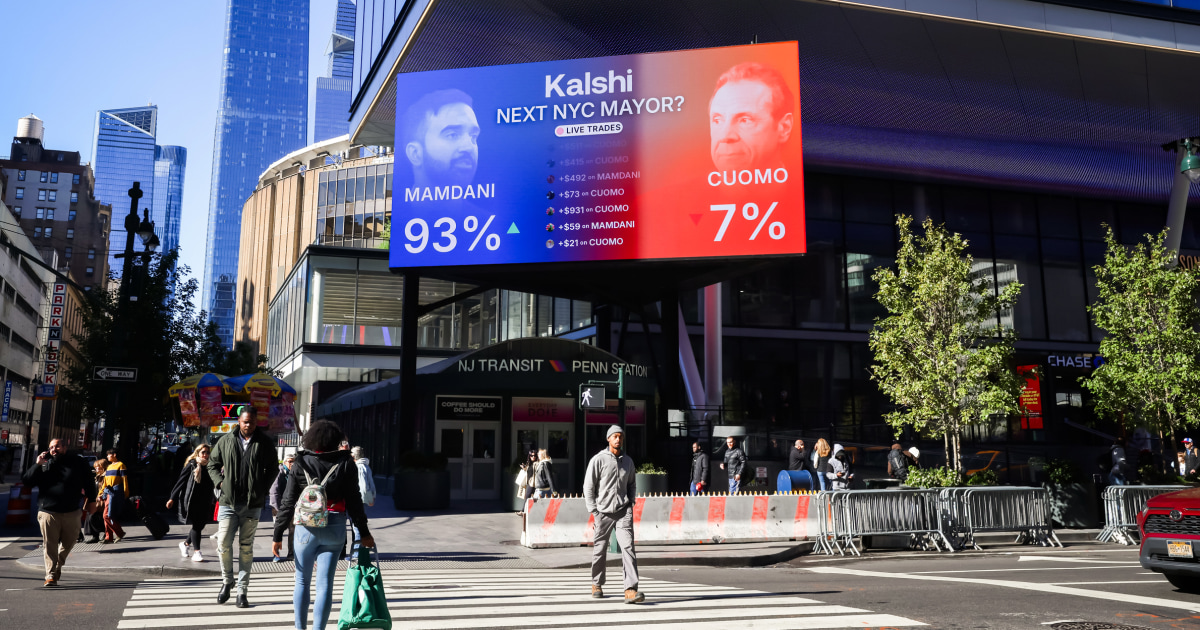- Pfizer Sweetens Its Offer for Metsera in Bidding War Against Novo Bloomberg.com
- Pfizer matches Novo bid for obesity biotech Metsera as takeover battle rages Financial Times
- FTC Questions Novo Nordisk’s Two-Step Acquisition of Metsera Over Antitrust Concerns geneonline.com
- Pfizer Responds to Delaware Chancery Court Ruling Business Wire
- Pfizer and Metsera Enter into Merger Agreement Amendment; Metsera’s Board of Directors Reaffirms Support of Merger with Pfizer MarketScreener
Category: 3. Business
-
Pfizer Sweetens Its Offer for Metsera in Bidding War Against Novo – Bloomberg.com
-

Assessing Lightspeed (TSX:LSPD) Valuation Following Recent Share Price Uptick
Lightspeed Commerce (TSX:LSPD) shares have quietly climbed about 10% in the past month, even as the company continues to operate in a competitive environment. The stock’s steady performance may catch the attention of investors looking for value in the tech sector.
See our latest analysis for Lightspeed Commerce.
Despite Lightspeed’s 1-month share price return of almost 10%, longer-term momentum is still muted. The total shareholder return over the past year is down 22%. Recent price action suggests a modest uptick in sentiment, but shares remain well below levels seen a few years ago. It appears the market is weighing signs of potential growth against lingering caution following a difficult period.
If you’re looking for other opportunities in the tech sector, it’s a good time to check out See the full list for free.
With the share price down sharply over the past several years but recent signs of momentum, investors now face a crucial question: is Lightspeed undervalued at these levels, or is the market already factoring in any future growth ahead?
The most widely followed narrative suggests that Lightspeed Commerce’s fair value is considerably above the last closing price, hinting at meaningful upside if projections hold. This fair value is anchored on assumptions about growth, margin improvement, and a rebound in valuation multiples rather than current market sentiment.
Accelerating adoption of digital payments and cloud-based platforms in retail and hospitality, core to Lightspeed’s growth strategy, continues to boost subscription and transaction-based revenue, supporting an expanding total addressable market and steady revenue growth. Consistent product innovation, including AI-powered insights and deeper e-commerce integration, drives higher software ARPU, increases upsell opportunities, and reinforces customer retention, positively impacting future revenue and gross margin.
Read the complete narrative.
What’s really driving this valuation call? The narrative is built on ambitious growth targets, margin expansion, and a future profit outlook that could surprise many. Analysts are baking in a financial acceleration. Interested in who’s betting big on Lightspeed’s rebound, and why their assumptions matter so much? Unlock the logic behind this bold fair value calculation.
Result: Fair Value of $21.28 (UNDERVALUED)
Have a read of the narrative in full and understand what’s behind the forecasts.
However, persistent competition or a failure to grow customer locations could easily shift sentiment and undermine this upbeat forecast.
Continue Reading
-

TSMC (NYSE:TSM) Valuation in Focus After Recent Share Price Pullback
Taiwan Semiconductor Manufacturing (NYSE:TSM) shares have seen modest pressure recently, closing at $286.50 and posting a 6% dip over the past month. Investors may be watching closely for catalysts, as the company’s longer-term gains remain strong.
See our latest analysis for Taiwan Semiconductor Manufacturing.
This latest dip comes after a strong run for Taiwan Semiconductor Manufacturing, with momentum fading slightly in recent weeks. Even so, the company’s year-to-date share price return remains an impressive 42%, and its one-year total shareholder return of nearly 44% highlights the broader growth story at play.
If you want to see what else is capturing investor attention in tech and AI, check out the opportunities featured in our See the full list for free..
With shares pulling back despite robust performance metrics, the debate is on: is Taiwan Semiconductor Manufacturing trading below its true value, or are investors already factoring in all the future growth potential at current prices?
With a fair value set at $310 and the stock closing at $286.50, Taiwan Semiconductor Manufacturing is seen as having more room to run, according to oscargarcia’s widely followed narrative. The gap between the current price and narrative fair value reflects bullish expectations for strong growth and relentless execution.
TSMC is the central pillar of the global semiconductor ecosystem, powering the AI revolution with unmatched scale, cutting-edge process technology, and disciplined execution. With record profits, dominant client base, and massive expansion underway, both in Taiwan and abroad, it stands as a low-risk way to own the AI infrastructure wave. Although geopolitical and trade risks loom, its moat, margins, and market position offer a rare combination of growth, profitability, and stability.
Read the complete narrative.
What powers this valuation premium? Dive into the details to see which blockbuster earnings figures, surging revenue projections, and ironclad margins shape this bold target. One key assumption could surprise you. Find out what drives this number behind the scenes.
Result: Fair Value of $310 (UNDERVALUED)
Have a read of the narrative in full and understand what’s behind the forecasts.
However, challenges such as rising costs from global expansion and heightened geopolitical tensions could quickly shift sentiment away from the current bullish view.
Find out about the key risks to this Taiwan Semiconductor Manufacturing narrative.
Looking at Taiwan Semiconductor Manufacturing through the lens of our SWS DCF model provides a different perspective. The DCF estimate of fair value is $247.94, which is noticeably below the current price. This suggests the market might be leaning optimistic, or that growth may already be fully reflected in the price.
Continue Reading
-

Why Kelt Exploration (TSX:KEL) Is Up 15.6% After Albright Gas Plant Commissioning Near Wembley
-
CSV Midstream Solutions Corp. recently announced the commissioning of the Albright Gas Plant near Kelt Exploration’s Wembley/Pipestone operations in Alberta, allowing Kelt to resume and increase gas deliveries after delays.
-
This development is expected to meaningfully boost Kelt’s operational capacity and production despite a modest cut to its annual guidance due to earlier setbacks.
-
We’ll explore how the restart and expansion of Kelt’s gas deliveries could influence the company’s investment narrative going forward.
Find companies with promising cash flow potential yet trading below their fair value.
For anyone considering Kelt Exploration today, the big picture centers on whether the company can effectively capitalize on its expanding operational capabilities and recover from project delays, now partially resolved with the Albright Gas Plant officially online. Previously, the main short-term catalysts revolved around achieving ambitious production targets in 2025 and translating those into higher revenues and improved margins, despite rising costs and some early-year guidance reductions following plant setbacks. The recent start-up marks a meaningful shift: Kelt can now ramp up gas deliveries, potentially accelerating production growth in the Wembley/Pipestone region and strengthening its competitive position. However, the uptick in share price since the announcement suggests much of the optimism could already be reflected in the valuation, especially since Kelt is trading at a significant premium to peers by earnings multiples. The major risks now tilt toward execution, ensuring reliable plant performance and being able to meet raised expectations, alongside continued sensitivity to gas market pricing and operational hiccups. In short, optimism about Kelt’s production outlook is justified, but the margin for error has narrowed with the plant now online. On the flipside, reliable capacity at the new plant may not fully offset potential volatility in gas prices, something investors should watch closely.
Kelt Exploration’s shares are on the way up, but could they be overextended? Uncover how much higher they are than fair value.
TSX:KEL Earnings & Revenue Growth as at Nov 2025 Simply Wall St Community fair value estimates for Kelt Exploration range widely from CA$9.33 to CA$12.18 across just two separate viewpoints, underscoring varying opinions about the company’s future. With key production risks shifting now that the new plant is operational, the diversity of opinions reminds you to consider both upside potential and possible downside scenarios before forming your own outlook.
Continue Reading
-
-

Google will integrate Kalshi and Polymarket predictions into its Finance AI tools
Google will begin including “prediction market” odds from the online betting platforms Kalshi and Polymarket into its Google Finance tools, the company said late Thursday.
The move would potentially put the platforms in front of millions of Americans who use Google, as the companies behind them face legal scrutiny in several major markets.
Polymarket and Kalshi insist that the wagers placed through their platforms are merely “event contracts” between private parties that should be regulated like commodities — not traditional gambling subject to state regulations.
That distinction has failed to convince many federal lawmakers and state attorneys general, however, who claim the companies “package sports betting as events contracts.”
Google said the integration of “event contract” sites will allow its users to “ask questions about future market events and harness the wisdom of the crowds.”
“Just ask something like ‘What will GDP growth be for 2025?’ directly from the search box to see current probabilities in the market and how they’ve changed over time,” the company said in a blog post.
It was unclear from Google’s announcement whether the prediction widgets would click through directly to Kalshi’s and Polymarket’s websites.
Representatives for Kalshi, Polymarket and Google did not reply to questions about how the deal will work.
But the “predictions” on both of these websites represent the aggregate of bets that users place on the outcome of whatever event is at issue — everything from financial results and election outcomes to movie award nominees and sports games.
Both companies currently operate within a patchwork of laws and regulations around the world that frequently put them in legal gray areas.
“By claiming to be federally regulated … issuers of sports event contracts can avoid myriad state [gaming] laws, including licensing and background investigations, minimum age requirements, federal anti-money laundering rules, and consumer protections such as addiction warnings and integrity monitoring,” six U.S. senators wrote in a Sept. 30 letter to federal regulators about sites like Kalshi and Polymarket.
Currently, U.S.-based individuals are barred from placing active bets on Polymarket and are instead restricted to a “view-only” mode on the site. But that is expected to change in the coming weeks, as Polymarket rolls out U.S. betting services.
Residents of Australia and France are also restricted in the kind of active betting they can do on Polymarket.
Kalshi is slightly different. Regulated in the United States by the Commodity Futures Trading Commission, Kalshi argues in court that it is permitted to operate in all 50 states, even ones that explicitly prohibit sports betting.
State attorneys general and anti-gambling groups in multiple states have brought legal actions against Kalshi that are moving through the courts. The outcome of these cases could determine the company’s access to U.S. markets in the future.
Along with legal questions, Polymarket has also faced allegations that its betting-based prediction system is vulnerable to market manipulation — and that the very existence of prediction markets could jeopardize the integrity of events, in particular of elections.
“Conduct designed to artificially affect the electoral process could manipulate the market and incentivize the spread of misinformation,” the Biden-era CFTC wrote in an appeal of an earlier lower-court ruling in favor of Kalshi.
On Thursday, a group of researchers at Columbia Business School’s Decision Risk and Operations division published a paper that found that as much as 25% of trading volume on Polymarket may be artificially inflated by some users rapidly buying and selling contracts to themselves.
The sites have also faced criticism over how they determine whether a given event has taken place.
Continue Reading
-
Lessons from Denmark’s eight-hour workday reform
In recent years, calls for shorter working weeks have re-emerged across Europe and beyond. Policymakers, unions, among others, have pushed for shorter workweeks, often arguing for positive productivity effects, whereby societies can maintain output while improving workers’ wellbeing (Garnero et al. 2022). Trials in the UK (Gross 2022) as well as experiments promoted by the organisation 4 Day Week Global have, for example, attracted substantial public attention and generated optimism about the feasibility of large-scale reductions in work time without loss of income.
Yet, the debate is hardly new. Over a century ago, the introduction of the eight-hour workday represented one of the most transformative labour-market reforms in industrialised countries. The Danish experience of 1919 provides a revealing historical parallel. At that time, the workday in the craft and industrial sectors was reduced to eight hours from up to ten hours, corresponding to a decline of as much as 12 hours per week, the largest reduction in working hours in Danish history.
In a recent study (Gunnesmo and Hansen 2025), we examine how this major work-time reduction affected key labour-market outcomes, such as hourly wages, weekly earnings, and employment. Drawing on newly digitised quarterly data covering more than 60 occupational groups across Copenhagen and the rest of Denmark between 1914 and 1931, we exploit variation in the size of the work-time cut across occupations to estimate the reform’s impact on labour-market outcomes.
A major early 20th-century experiment
The 1919 work-time reform was introduced in the industrial and craft sector through central negotiations between the national labour federation (De Samvirkende Fagforbund) and the main employers’ association (Dansk Arbejdsgiverforening). The first agreement in January 1919 reduced working hours to a maximum of nine and a minimum of eight hours per day, while standardising Saturday hours to eight. A few months later, in May, the full transition to the eight-hour day was implemented without any further centrally agreed-upon wage compensation. Figure 1 shows the development of the average workday in the sector from 1872 to 1925 and illustrates the magnitude of the reform.
Figure 1 Daily working hours, 1872–1925
Notes: Average hours worked in Denmark from 1872 to 1925. The dashed line represents the collective bargaining reform. We observe country-level average working hours between 1872 and 1911, but with gaps. We calculate the 1914–1925 values from occupation-level data. Hours are interpolated where data is missing: several intervals between 1872 and 1911, and between 1914 and 1919.
This shift was part of a broader international movement (e.g. Milhaud 1925). Similar reforms were implemented in France, Germany, and Sweden between 1918 and 1920, and the ‘Eight hours labour, eight hours recreation, eight hours rest’ slogan had become a defining demand of organised labour since the late 19th century (Figure 2).
Figure 2 ‘8–8-8’ demonstration in Copenhagen
Notes: Photograph from the 1 May demonstration in Copenhagen in 1912, where participants demanded ‘Eight hours labour, eight hours recreation, eight hours rest’.
Source: Arbejdermuseet – The Workers Museum.Unlike in some countries, where full wage compensation was determined by law, Danish workers negotiated their wages with their local employer through labour unions. This type of wage setting allows for a clear empirical test of how wages and employment adjusted when hours were cut substantially.
Wage compensation and employment adjustment
Our findings show that the eight-hour reform reduced weekly earnings in proportion to the reduction in hours in provincial towns but not in Copenhagen. In the capital, hourly wages rose enough to offset roughly 40% of the loss in working hours. In other words, a 1% reduction in work time led to a 0.4% increase in hourly pay and a 0.6% decline in weekly earnings.
Employment, however, increased across both regions. Firms responded to the reduction in hours by hiring additional workers, which is consistent with the classic ‘work-sharing’ hypothesis. The rise in employment was especially pronounced among unskilled and female workers in Copenhagen, suggesting that these groups particularly benefited from the reform. The positive employment effects persisted throughout the 1920s, even as economic conditions changed.
This historical evidence contrasts with evidence from more recent reforms, such as those in France (Crépon and Kramarz 2002) and Germany (Hunt 1999). In both papers, the authors found full wage compensation but no employment gains. The evidence also complements findings from Bengtsson and Molinder (2017) for Sweden, where full compensation led to job losses in traded industries. Denmark’s move to the eight-hour workday therefore highlights the importance of institutional context: if wage bargaining is decentralised, full compensation is not necessarily guaranteed.
Interpreting the results
The Danish institutional context can be interpreted through the union–monopoly framework of Calmfors (1985), in which unions set wages while taking working hours as given. The eight-hour workday itself was determined at a higher level of bargaining between the national labour federation and the main employers’ association and, in the model, assumed outside the scope of individual unions. Within this framework, when workers value consumption more than they dislike working, unions increase wages to partially offset lost hours, though not enough to preserve weekly earnings. At the same time, if hours and labour are sufficiently substitutable, firms respond by hiring additional workers.
Applying this logic to 1919 Denmark, we interpret the partial wage compensation and employment expansion as the outcome of decentralised wage bargaining under constrained hours. In Copenhagen, where union membership density was higher, the unions secured partial compensation, whereas in the provinces with weaker unions, wages hardly moved.
Although the reduction in work time for all workers presents an opportunity for the employer to replace lost labour with capital, we find no evidence that the reform accelerated mechanisation. We also find no effects of the reform on labour-market conflicts, although conflict levels in Denmark were high in the years surrounding the reform. Data from industrial censuses show no rise in horsepower per worker in firms most exposed to the reform, and strike records indicate that neither strikes nor lockouts changed significantly once the eight-hour day was introduced. Adjustment occurred primarily through labour demand, not through capital deepening or industrial unrest.
Lessons for today’s policy debate
Our results offer three lessons for current discussions on work-time reductions. First, large reductions in working hours are unlikely to be costless. The Danish experience shows that while productivity may increase at the margin, even a historically successful transition such as the eight-hour reform involved a clear trade-off between income and leisure. This contrasts with some contemporary narratives that suggest shorter workweeks can sustain existing pay levels through keeping output constant.
Second, the reform’s employment gains were concentrated among unskilled workers, implying that shorter workweeks may benefit marginalised groups in the labour market. In that sense, work-time reductions can redistribute employment opportunities, especially in periods of high unemployment, which characterised post-war Denmark in 1919.
Third, institutional design matters. Full wage compensation, as in Sweden’s experience, can offset employment gains, while unrestricted wage bargaining, as in Denmark, allows for work sharing. Modern reforms should therefore account for wage-setting institutions, productivity responses, and labour-market conditions.
Authors’ note: We gratefully acknowledge financial support from The ROCKWOOL Foundation on the research project titled ‘Welfare and Economic Development: Lessons from the Origins of the Welfare State’, which this research is part of.
References
Bengtsson, E, and J Molinder (2017), “The economic effects of the 1920 eight-hour working day reform in Sweden”, Scandinavian Economic History Review 65(2): 149–68.
Calmfors, L (1985), “Work sharing, employment and wages”, European Economic Review 27(3): 293–309.
Crépon, B, and F Kramarz (2002), “Employed 40 hours or not employed 39: Lessons from the 1982 mandatory reduction of the workweek”, Journal of Political Economy 110(6): 1355–89.
Garnero, A, A Tondini, and C Batut (2022), “The employment effects of working-time reductions in Europe”, VoxEU.org, 19 December.
Gross, J (2022), “4-day workweek brings no loss of productivity, companies in experiment say”, New York Times, 22 September.
Gunnesmo, M, and C Hansen (2025), “Labor-market effects of introducing the 8-hour workday”, CEPR Discussion Paper 20785.
Hunt, J (1999), “Has work-sharing worked in Germany?”, Quarterly Journal of Economics 114(1): 117–48.
Milhaud, E (1925), “The results of the adoption of the eight-hour day: The eight-hour day and technical progress”, International Labour Review 12: 820.
Continue Reading
-

The Bull Case For Fairfax Financial Holdings (TSX:FFH) Could Change Following Strong Q3 Profit Surge and Shelf Renewal – Learn Why
-
Fairfax Financial Holdings Limited reported third quarter 2025 earnings earlier this week, posting net income of US$1.15 billion and basic earnings per share from continuing operations of US$55.90, both up from the same period last year.
-
The company also renewed its universal shelf prospectus, granting it flexible access to capital markets over the next 25 months for debt, equity, or other securities offerings.
-
We’ll examine how Fairfax’s strong quarterly profit growth could influence its long-term investment narrative in light of recent analyst expectations.
Find companies with promising cash flow potential yet trading below their fair value.
To be a long-term shareholder in Fairfax Financial Holdings, you need to believe in the company’s disciplined, global insurance and investment approach, its ability to capitalize on emerging market growth, and its consistent capital management. The recent strong Q3 earnings growth highlights robust core profitability, but it does not materially change the near-term catalyst: the sustainability of elevated investment income, especially if global interest rates begin to decline. The main risk remains earnings sensitivity to shifts in interest rates and market volatility.
Among recent announcements, Fairfax’s renewal of its universal shelf prospectus stands out. This move allows the company to flexibly access debt and equity markets over the next 25 months, reinforcing its capital strength. While supportive, this announcement does not directly influence the most important near-term catalyst, though it positions Fairfax to act quickly if external conditions shift.
But investors should be alert to the potential downside if rising investment income proves temporary and…
Read the full narrative on Fairfax Financial Holdings (it’s free!)
Fairfax Financial Holdings’ narrative projects $41.8 billion revenue and $2.9 billion earnings by 2028. This requires 3.4% yearly revenue growth and a $1.7 billion earnings decrease from $4.6 billion today.
Uncover how Fairfax Financial Holdings’ forecasts yield a CA$2708 fair value, a 22% upside to its current price.
TSX:FFH Community Fair Values as at Nov 2025 Five members of the Simply Wall St Community estimate Fairfax’s fair value ranging from US$2,707 to over US$2 million per share. These widely different opinions underscore the uncertainty around Fairfax’s earnings durability if interest rates reset and market returns cool.
Explore 5 other fair value estimates on Fairfax Financial Holdings – why the stock might be worth just CA$2708!
Continue Reading
-
-

OpenAI Asks US to Expand Chips Tax Credit to AI Data Centers
Construction at the Stargate AI data center in Abilene, Texas in September.
(Bloomberg) — OpenAI has asked the Trump administration to revamp a Chips Act tax credit to help lower the cost of artificial intelligence infrastructure, as the startup explores additional ways the US government can support an industrywide data center build-out for AI.
Most Read from Bloomberg
In a letter last week to White House Office of Science and Technology Policy Director Michael Kratsios, OpenAI Chief Global Affairs Officer Chris Lehane suggests the administration work with Congress to expand a 35% chips-focused tax credit to AI data centers, AI server producers and electrical grid components, such as transformers and the specialized steel used to produce them. The letter is dated Oct. 27, according to a copy posted online by the company.
Broadening the tax credit will “lower the effective cost of capital, de-risk early investment and unlock private capital to help alleviate bottlenecks and accelerate the AI build in the US,” Lehane said in the letter.
The letter, which has not been widely covered, offers added clarity into the role OpenAI thinks government should play to help offset the risk from costly investments in AI. OpenAI alone has committed to spending $1.4 trillion on data centers and chips to build more advanced AI systems and support wider adoption of the technology. Those spending plans have drawn scrutiny as the unprofitable startup pursues creative financing arrangements to support it, including deals that have been criticized for being circular.
Earlier this week, OpenAI Chief Financial Officer Sarah Friar alarmed some industry watchers by hinting at a role for the US government to “backstop the guarantee that allows the financing to happen.” Soon after, Friar and OpenAI’s Sam Altman took pains to clarify her remarks, stressing that she had misspoken and that the ChatGPT maker was not seeking a bailout for its infrastructure commitments.
The Trump administration has dismissed the idea of a financial backstop for AI companies, according to US officials, after Friar’s remarks raised questions about the prospect for a bailout. White House AI and crypto czar David Sacks also posted Thursday: “There will be no federal bailout for AI.”
Altman, in a social post Friday, said an effort to revitalize the US chip industry “across the entire stack — fabs, turbines, transformers, steel, and much more — will help everyone in our industry, and other industries (including us).”
Continue Reading
-

EV maker Rivian gives CEO a Musk-style pay package worth up to $4.6 billion
Rivian CEO RJ Scaringe tours the inside of electric auto maker Rivian’s manufacturing facility in Normal, Illinois, U.S. June 21, 2024.
Joel Angel Juarez | Reuters
EV maker Rivian on Friday said it was giving its CEO a pay plan worth as much as $4.6 billion over the next decade, a deal similar to Tesla’s record package for CEO Elon Musk, and linked to new profit targets and reduced share price milestones.
The move by the Rivian board shows that the Tesla plan for Musk could become a model for companies aiming to grow fast. Rivian’s pay package for its CEO RJ Scaringe could be one of the richest in history, depending on what performance goals are met.
The new compensation package also highlights Rivian’s push to retain its founder and keep him focused on growth and profitability as the automaker, known for its R1S SUVs and R1T pickups, gears up to launch next year its smaller, more affordable R2 SUV that will compete with Tesla’s best-selling Model Y crossover.
Tesla shareholders on Thursday approved a record $1 trillion pay package for CEO Elon Musk based on a combination of operational and valuation milestones over 10 years.
“While Rivian may not be a direct copycat, there are definitely Elon Musk characteristics that are similar,” said Yonat Assayag, a partner at compensation consulting firm ClearBridge Compensation Group.
The offer shows how other companies are following the Tesla model for tying outsize CEO rewards to big potential market gains, she said, adding that some have reached out to her own firm looking for similar executive-pay designs. “It’s not to keep up with Musk, but inspired by Musk’s award.”
Under the new plan, Scaringe is receiving options to purchase up to 36.5 million shares of Rivian’s Class A stock, about 16 million more than his previous grant, at an exercise price of $15.22 apiece, the company said in a filing with the U.S. Securities and Exchange Commission.
The award will vest only if Rivian achieves reduced stock-price milestones ranging from $40 to $140 a share over 10 years, as well as new operating income and cash flow targets over the next seven years.
The previous pay package, awarded in 2021, was linked to Rivian’s share price reaching $110 a share and went up to $295. Rivian canceled that saying the targets tied to that grant were unlikely to be met.
Rivian shares closed at $15.22 on Thursday. The one-year median price target for the company stands at about $14, according to data compiled by LSEG.
“The rigorous and challenging milestones associated with this option award are structured in such a way that ensures the options only vest should the company deliver significant value to our shareholders,” a Rivian spokesperson said in a statement.
If Rivian hits all the milestones as part of the package, he will get up to $4.6 billion, including the costs of exercising options, Reuters’ calculation showed, while Rivian said shareholders will gain $153 billion in value.
The potential $4.6 billion payout is equal to roughly a quarter of Rivian’s $18.7 billion market value and marginally higher than its $4.4 billion cash balance, at the end of September.
Rivian’s board also doubled Scaringe’s base salary to $2 million, saying the changes were made with input from an independent compensation consultant and were designed to better align pay with shareholder returns.
Separately, Scaringe was granted 1 million common units in Mind Robotics, a newly formed Rivian spinoff with external funding developing industrial AI technology, giving him up to a 10% economic interest once the business profit exceeds a certain threshold.
Scaringe will serve as chairman of the board of directors for Mind Robotics, and Rivian is a shareholder of the company, it had said earlier this week.
Continue Reading
-

Tesla plans to pay Musk $1tn
Lucy HookerBusiness reporter
 Getty Images
Getty ImagesA great leader is a huge asset for company, of course, but can anyone be worth $1 trillion?
That is the pay packet Tesla shareholders have approved for Elon Musk, as long as he meets the targets they have set over the next 10 years.
In the meantime he won’t collect a salary, but will presumably throw himself into his work with renewed vigour.
He was certainly buzzing with energy as he jigged around the stage at the carmaker’s Texas headquarters to rapturous applause, telling the audience that while other shareholder meetings were “snoozefests”, Tesla’s are “bangers”.
Musk has attracted an army of critics, upset that he sided with US President Donald Trump, wielding his chainsaw at government programmes, and wading into politics overseas with explicit support for the far right.
But he has an equally large following of admirers, people who believe in his vision and don’t doubt that he can achieve it.
It seems most of his shareholders are in this camp, after they backed his new remuneration package this week.
Of course shareholders signed up, says New York-based financial analyst Dan Ives. If Musk succeeds – and Ives thinks he will – he will have created trillions of dollars worth of shareholder value, ample payback for investors.
Ives sees Musk as a “modern day Albert Einstein, a Thomas Edison”.
Without the stupendous pay package, he says, there was a risk that within a few years Musk would have walked away, taking his Artificial Intellgience (AI) initiatives with him.
“Tesla without Musk is like pizza without cheese,” he says.
Ives does not own shares in Tesla, but analyses the company for his firm Wedbush Securities and thinks Musk’s “ability to go where others are not” means he may well achieve the targets that have been set.
“There’s edgy behaviour, there’s haters, but a lot of people love that. And that’s why he’s the richest person in the world.
“Does it help sell cars in Europe? No. But does it help Tesla win the AI race? Yes.”
 Bloomberg via Getty Images
Bloomberg via Getty ImagesMusk’s political activities have prompted a backlash from some customers, including demonstrations outside showrooms earlier this year.
But Matt Britzman at Hargreaves Lansdown in London, who has invested in Tesla, says the impact is a drop in the ocean when it comes to Tesla’s earnings.
Far from weighing on the firm’s valuation, he reckons around a third of the value of Tesla can be attributed to what he calls the “Musk premium”, value that wouldn’t be there without him.
“It’s a $1.4 trillion company, not based on the current car business. It’s a $1.4 trillion business based on expectations of what it can deliver over the next three years.”
And a lot of those expectations are fixed on Musk and his record of thinking big and thinking long term, he says.
The potential reward for Musk is as astronomical as his vision for space travel.
With $1 trillion you could buy 20 million Model Y Teslas, at around $50,000 each. Or you could buy yourself a $10m house every day for 250 years, and still have change for furnishing and decorating.
The conditions appear to be very testing, including delivering 20 million Tesla vehicles and one million robots. A million self-driving Robotaxi vehicles will also need to be on the roads.
Tesla’s overall market value will need to rise from its current $1.4tn to $8.5tn.
These are “incredibly high milestones”, says Ann Lipton, a law professor at the University of Colorado.
However, the board does have “discretion” to decide when some of them have been met, she adds.
“If intervening events prevent him from reaching the goals, the board can deem them met anyway.”
So the targets may not turn out to be quite as demanding as they appear.
There is also nothing in the terms, no constraint, that prevents Musk continuing to speak out about politics or anything else.
“Even after the pay package was proposed, he didn’t pull back from his political commentary,” adds Prof Lipton.
“So it seems to me that this pay package, whatever the goals are, however lofty they may be, they’re not going to inhibit him from involving himself in whatever matters he wants to be involved in.”
That freedom could pose the biggest risk, according to Stephanie Valdez Streaty, director of industry insights at car sector marketing and software firm Cox Automotive.
Musk is a visionary she says, but he’s also unpredictable, and it is possible that his other interests may distract him as they have before, leading him to neglect Tesla, which itself is already a smorgasbord of different businesses and challenges.
“I’m hoping that based on his experience with getting politically involved and how that really hurt some of his brand and sales that he has learned to really focus on this business.
“But that’s going to be the board’s responsibility,” she adds, “to make sure that he stays within the guardrails, and that he does what’s right for Tesla.”
And if he does, well the sky is the limit, or possibly Mars, for Musk’s ambition.
“People laughed when his 2018 pay package was approved,” says Prof Lipton. “And he hit those milestones well ahead of schedule.”
Continue Reading
